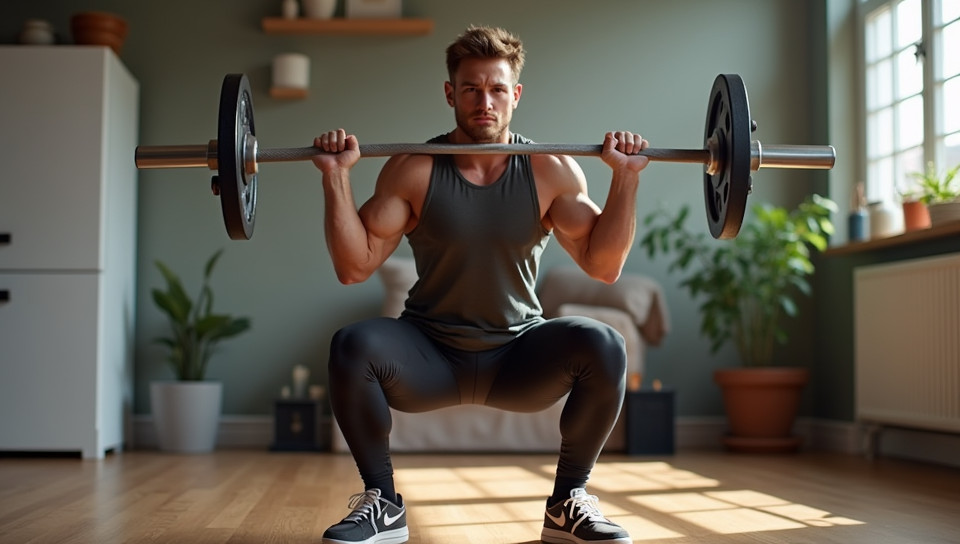Bodyweight squats improve leg strength in home routines 98%

Bodyweight Squats: The Ultimate Leg-Strengthening Exercise for Home Routines
Are you tired of relying on bulky gym equipment to get in shape? Do you struggle to find time to hit the gym, but still want to maintain strong and healthy legs? Look no further than bodyweight squats. This simple yet effective exercise can be done anywhere, anytime, making it a game-changer for anyone looking to improve their leg strength from the comfort of their own home.
Why Bodyweight Squats Are Essential
Bodyweight squats are an excellent way to build leg strength because they work multiple muscle groups at once. When performed correctly, bodyweight squats engage your quadriceps, hamstrings, glutes, and even your core muscles. This means you'll be targeting a range of different muscles with just one exercise.
The Benefits of Bodyweight Squats
Bodyweight squats offer a wealth of benefits that make them an ideal addition to any home workout routine:
- Increased leg strength
- Improved balance and coordination
- Enhanced athletic performance
- Reduced risk of injury (by strengthening the muscles around your joints)
- Convenience (no gym membership required!)
How to Perform Bodyweight Squats Correctly
To get the most out of bodyweight squats, it's essential to perform them correctly. Here are some tips to keep in mind:
- Stand with your feet shoulder-width apart, toes facing forward or slightly outward
- Slowly lower yourself down into a squat, keeping your back straight and your knees behind your toes
- Push through your heels to return to standing position
- Repeat for 12-15 reps, 3 sets
Conclusion
Bodyweight squats are a simple yet effective way to improve leg strength from the comfort of your own home. Whether you're a fitness enthusiast or just looking for a convenient way to stay active, bodyweight squats are an excellent addition to any workout routine. So why wait? Get started today and experience the benefits of stronger, healthier legs for yourself!
- Created by: Arjun Singh
- Created at: Aug. 25, 2024, 11:14 p.m.
- ID: 8407

